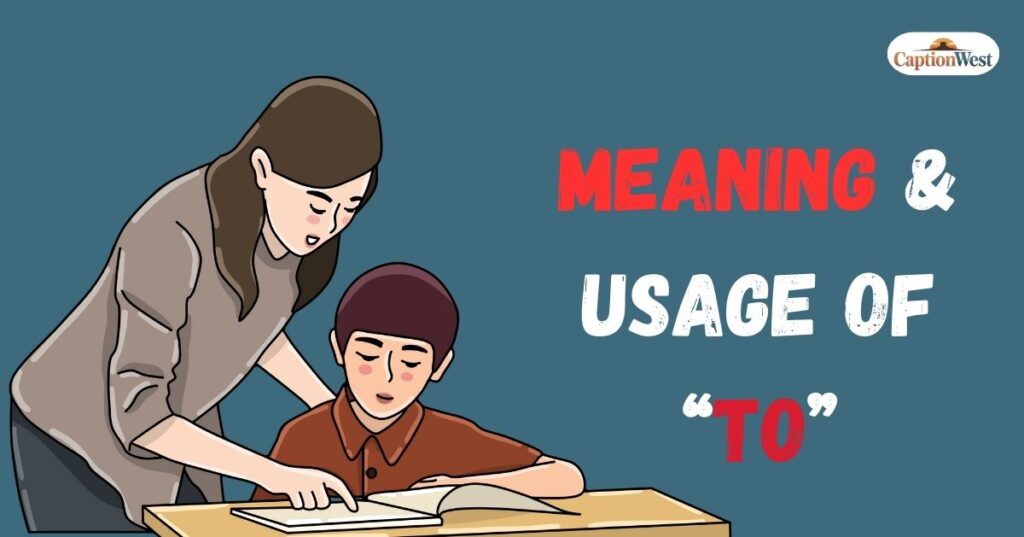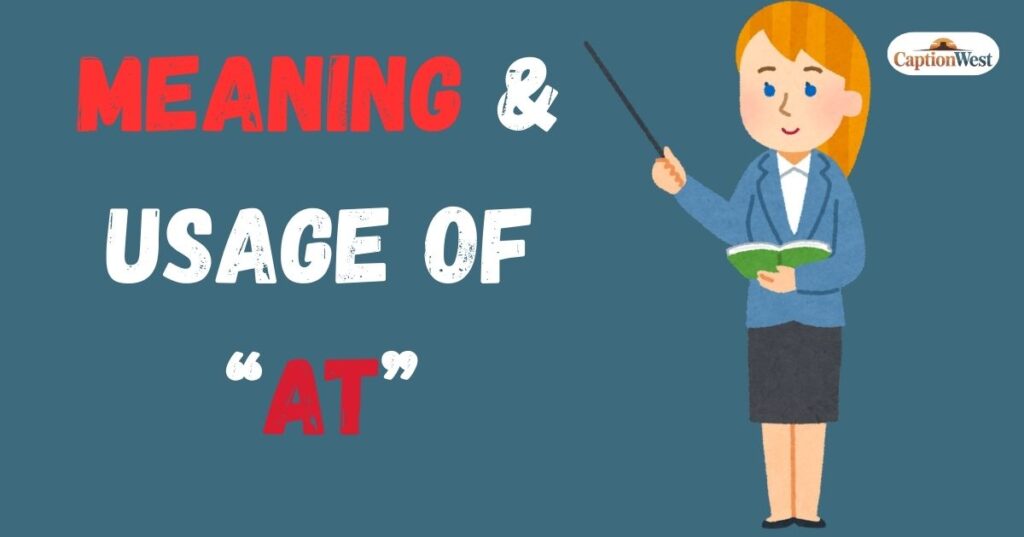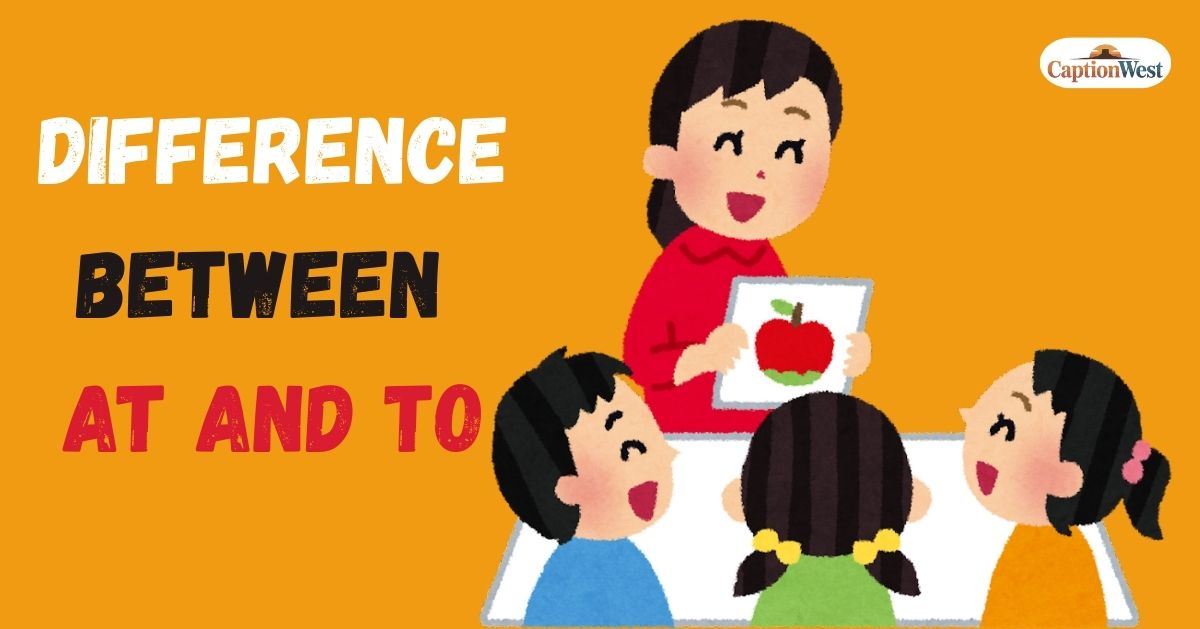If you’re learning English, you’ve probably faced confusion with prepositions. One of the most common grammar questions is: What’s the difference between at and to? These two little words look simple, but their meanings and usage can be tricky.
Both at and to are prepositions, but they work in very different ways. One indicates position or place, while the other shows direction, movement, or recipient. Using them incorrectly can change the meaning of a sentence or make it sound unnatural.
In this article, we’ll break down the difference between at and to with clear rules, real examples, and common mistakes to avoid. By the end, you’ll be able to use these prepositions confidently in your everyday English.
Quick Answer: “At” vs. “To”

- To = shows movement, direction, recipient, or purpose
- Example: I’m going to the park. / Give this to Sarah.
- Example: I’m going to the park. / Give this to Sarah.
- At = shows location, position, point in time, or action toward someone
- Example: I’m waiting at the bus stop. / He laughed at my joke.
- Example: I’m waiting at the bus stop. / He laughed at my joke.
👉 Think of to as motion toward something, while at is about being in a specific place, time, or situation.
Meaning & Usage of “To”
The preposition to is one of the most frequently used words in English. It usually expresses the idea of movement toward a destination, giving something to someone, or showing purpose.
1. Direction or Movement
Use to when someone or something is moving toward a place.
- I’m going to London next week.
- They walked to the store.
- Send the file to my email.
2. Recipient
When something is given, sent, or addressed, use to.
- She gave the book to her friend.
- I explained the problem to my teacher.
- Please send this letter to John.
3. Purpose or Intention
To can also show the aim of an action.
- We raised a toast to success.
- This song is dedicated to my parents.
- He works hard to achieve his dreams.
4. Time Expressions
To sometimes means “until” when talking about time.
- The shop is open from 9 to 5.
- It’s ten minutes to midnight.
👉 In short: To = movement, giving, purpose, or until a point in time.
Meaning & Usage of “At”

The preposition at is about static position, exact time, or focusing attention on something/someone.
1. Location or Position
Use at for specific places or points.
- I’m waiting at the bus stop.
- She is at the library.
- We arrived at the airport early.
2. Time Expressions
At is used for exact points in time.
- The meeting is at 3 PM.
- I usually wake up at sunrise.
- We eat dinner at night.
3. Situations or Actions Toward Someone
Sometimes at shows direction of an action toward someone.
- He shouted at me.
- She laughed at the joke.
- Don’t stare at people.
👉 In short: At = specific place, exact time, or action directed toward someone.
Comparison Table: At vs. To
| Usage | “To” Examples | “At” Examples |
| Direction | I’m going to the park. | ❌ Not used |
| Recipient | Send this letter to Sarah. | ❌ Not used |
| Place / Position | ❌ Not used | I’m waiting at the station. |
| Time | Work from 9 to 5. | The meeting starts at 5 PM. |
| Purpose | Raise a glass to her. | ❌ Not used |
| Action Toward | ❌ Not used | He shouted at me. |
Common Mistakes with At and To
English learners often confuse these prepositions. Let’s clear up some common errors.
❌ Send at someone
✅ Send to someone
❌ Arrive to the station
✅ Arrive at the station
❌ She is married at him
✅ She is married to him
❌ Discuss about the problem
✅ Discuss the problem
👉 Tip: Remember, arrive at a place, but go to a place.
American vs. British English Usage
Most rules are the same in both, but a few variations exist:
- Write to someone (standard in both).
- In American English, you can also say write someone (dropping to). Example: I’ll write you tomorrow.
- British English usually keeps the to: I’ll write to you tomorrow.
When Not to Use At or To
Some verbs don’t need these prepositions, but learners add them by mistake.
❌ Enter to the room
✅ Enter the room
❌ Discuss about the issue
✅ Discuss the issue
❌ Request to a favor
✅ Request a favor
👉 Always check which verbs require a preposition and which don’t.
Read Must : Difference Between In and At | Usage, Rules, Examples & Common Mistakes
Understanding the Difference Between At and To in Daily Conversations
When learning English, the difference between at and to often appears in simple daily conversations. For example, you might say, “I’m going to the office” (movement) or “I’m at the office” (location). Both sentences are correct, but their meanings are different. The difference between at and to becomes clear when you think of to as showing movement toward a goal, while at shows a fixed position.
Another example:
- She spoke to her friend about the issue. (focus on the recipient)
- She was angry at her friend. (focus on direction of emotion)
By practicing with such examples, you will quickly master the difference between at and to in real situations.
Why the Difference Between At and To Matters in English Grammar
Understanding the difference between at and to is not just about grammar rules—it’s about communicating meaning clearly. If you say, “He arrived to the station,” it sounds incorrect, but “He arrived at the station” is correct. Similarly, “He gave the pen at her” is wrong, while “He gave the pen to her” is correct.
The difference between at and to also helps learners avoid common mistakes in writing and speaking. Using to shows direction, recipient, or purpose, while at points to a specific time, place, or focus of attention. Once you understand this, you’ll find that the difference between at and to actually makes English easier to use with confidence.
Final Thoughts on the Difference Between At and To
The difference between at and to is simple once you remember the main rule:
- To = movement, recipient, or purpose.
- At = location, exact time, or action toward someone.
Both words are small but powerful. Using them correctly will make your English sound clear and natural. The more you practice, the easier it gets. Try making your own sentences with at and to, and soon you won’t even have to think about the rules.

